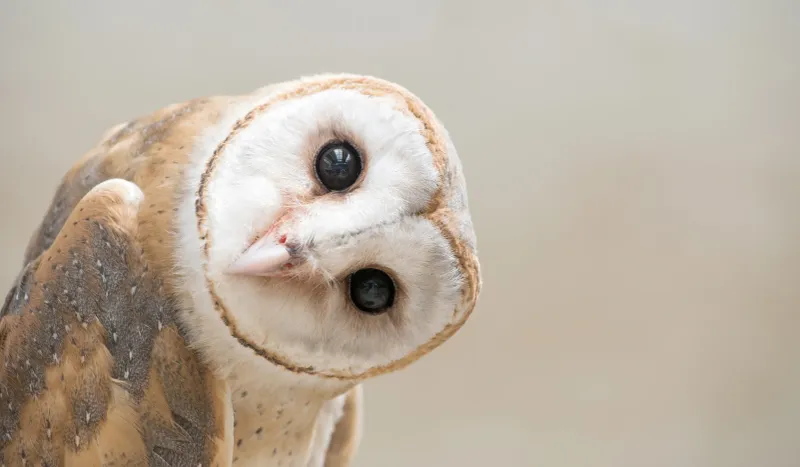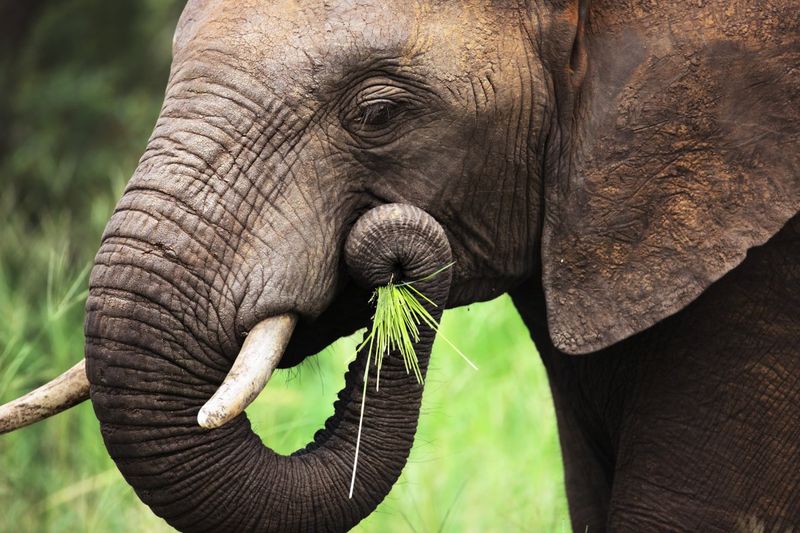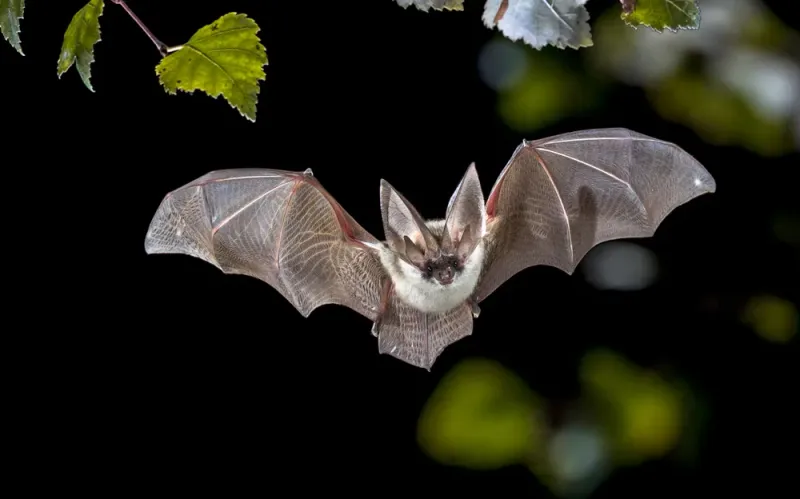Some animals can hear things you’ll never even know exist.
We’re talking whispers underwater. Wingbeats in the dark. The low, bone-shaking rumble of an earthquake before it hits.
While humans fumble with headphones and shout “What?” across the room, these creatures are busy eavesdropping on the universe.
Bats can map an entire cave with sound. Elephants detect storms hundreds of miles away. Owls? They can hear a mouse’s heartbeat under a blanket of snow.
This isn’t just about big ears. It’s about superpowers—built-in sonar, infrasonic hearing, and sound so sharp it slices through silence like a blade.
Ready to meet the world’s top sound-sensing legends? These 13 animals don’t just hear the world—they own it.
Barn Owl

With its heart-shaped face acting as a satellite dish, the Barn Owl’s hearing is unparalleled. This nocturnal hunter captures even the faintest rustle of a mouse in the dark.
Thanks to asymmetrical ear placements, it can pinpoint sound locations with remarkable accuracy. Silent flight aids its stealthy approach, making prey almost unaware until it’s too late.
Did you know? Barn Owls have been symbols of wisdom and prophecy in many cultures. Their auditory prowess continues to captivate and inspire awe among bird enthusiasts worldwide.
Elephant

An African Elephant’s large ears are not just for cooling by flapping; they are sophisticated sound-gathering tools. These gentle giants can communicate over kilometers using low-frequency rumbles.
Their hearing is adapted to picking up subtle vibrations in the ground, allowing them to sense distant thunderstorms or approaching herds.
Interesting fact: Elephants exhibit a strong sense of family and often use their hearing to maintain group cohesion. Their auditory capabilities are a testament to evolution’s brilliance.
Greater Wax Moth

The Greater Wax Moth holds the record for the highest frequency hearing among animals. Its ears, though tiny, are finely tuned to detect frequencies up to 300kHz, surpassing even bats.
This capability helps it evade predators, especially bats, by hearing their echolocation calls.
Despite being small and unassuming, the Greater Wax Moth’s auditory system is a marvel of nature’s engineering, demonstrating that size isn’t everything when it comes to survival.
Bat

Bats are synonymous with exceptional hearing, using echolocation to hunt and navigate in complete darkness. By emitting high-pitched sounds and listening for echoes, they create a detailed auditory map of their surroundings.
This capability allows them to catch insects mid-flight with incredible precision.
Bats have adapted to a variety of environments, with some species capable of hearing frequencies beyond human detection. Their unique auditory system showcases the wonders of evolutionary adaptation.
Dolphin

Dolphins are marine mammals with a sophisticated sonar system known as echolocation. This allows them to ‘see’ with sound, detecting objects and navigating the vast oceans with ease.
Their highly developed auditory cortex processes these sounds with incredible accuracy, enabling them to hunt and communicate underwater.
Fun fact: Dolphins have been known to use their echolocation skills to collaborate with humans, catching fish in tandem. Their intelligence, combined with keen hearing, makes them truly remarkable creatures.
Dog

Dogs have long been known as man’s best friend, partly due to their acute hearing. Capable of detecting sounds beyond human range, they can hear frequencies as high as 65kHz.
Their mobile ears help them locate the direction of sounds, aiding in both hunting and protection.
Historically, dogs have been used for various tasks, from hunting to search and rescue, all thanks to their exceptional hearing. This ability strengthens the bond between humans and their loyal companions.
Cat

Cats possess an enigmatic aura, partly due to their acute sense of hearing. They can detect ultrasonic sounds that humans cannot, which plays a key role in hunting small prey.
Their ears can rotate 180 degrees, allowing them to hone in on the tiniest sound with precision.
Did you know? Cats’ hearing is pivotal in their communication and survival, making them both formidable hunters and affectionate pets. Their auditory skills are as captivating as their mysterious personalities.
Horse

Horses have evolved to possess exceptional hearing, crucial for survival in the wild. Their large, mobile ears can rotate independently, detecting sounds from different directions.
They are sensitive to both audible and infrasonic frequencies, enabling them to sense distant threats.
Historically, horses have been invaluable to humans, their auditory capabilities aiding in communication and alertness. From the battlefield to the farm, their keen hearing has ensured their role as steadfast companions.
Fennec Fox

The Fennec Fox, with its distinctive large ears, is superbly adapted to the desert environment. These ears dissipate heat and enhance their exceptional hearing, crucial for locating prey underground.
Capable of detecting even the faintest movements, they are skilled nocturnal hunters.
Fun fact: Fennec Foxes are the smallest canid species, yet their hearing prowess is unmatched in their harsh habitat. Their oversized ears are not just adorable but vital for their survival.
Kangaroo Rat

The Kangaroo Rat, native to arid regions, has extraordinary hearing abilities that aid in survival. These small rodents can detect the subtlest of sounds, crucial for evading predators.
Their large, sensitive ears pick up vibrations that others might miss, allowing them to stay one step ahead.
Did you know? Despite living in harsh deserts, Kangaroo Rats rarely need to drink water, obtaining moisture from their food. Their keen sense of hearing is another remarkable adaptation to a challenging environment.
Owl Monkey

Owl Monkeys, with their large eyes and ears, are nocturnal primates with excellent hearing. In the dense rainforests, they rely on auditory cues to navigate and communicate.
Their keen hearing helps them locate food and avoid predators during their nightly forays.
Interesting tidbit: Owl Monkeys are the only nocturnal monkeys, and their exceptional hearing plays a key role in their unique lifestyle. Their auditory prowess complements their night-adapted vision, making them fascinating creatures of the night.
Mole

Despite their poor eyesight, Moles have developed acute hearing, essential for their subterranean lifestyle. They use sound to navigate and find food underground, detecting vibrations with incredible precision.
Their long, sensitive whiskers also aid in sensing their environment.
Did you know? Moles can detect seismic vibrations, making them adept at sensing approaching predators. Their specialized hearing abilities are a perfect adaptation to life in the dark tunnels they call home.
Beluga Whale

Beluga Whales are known as the ‘canaries of the sea’ due to their extensive vocalizations and echolocation skills. These marine mammals rely on sound to navigate the deep, dark waters of the Arctic.
Their sophisticated echolocation enables them to hunt and communicate over vast distances.
Fun fact: Beluga Whales are highly social creatures, often seen in pods, and their hearing is key to their complex social structures. Their ability to ‘see’ with sound is a testament to nature’s ingenuity.

